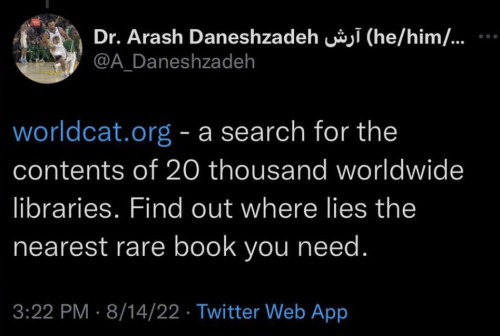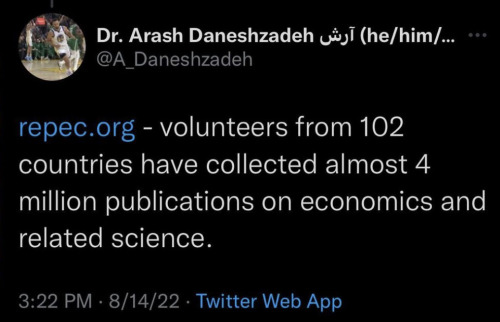
A Cozy Cabana for Crocodiles, Alligators and their ancestors. -fan of the webcomic Paranatural, Pokemon, Hideo Kojima titles -updates/posts infrequently
237 posts
Latest Posts by gatortavern - Page 3
this is fabulous!

Okay but listen
Feraligatr and totobabies

TRUTH. What you need is imagination, and you don’t need to go anywhere to use it.
People talk a lot about how reading is necessary for writing, but when you really want to improve your writing, it’s important to go beyond just simple reading. Here are some things to do when reading:
Note how they begin and end the story. There are a ton of rather contradictory pieces of advice about starting stories, so see how they do it in the stories you enjoy. Don’t only look at the most popular stories, but look at your more obscure favorites.
See what strikes you. Is it fast or complicated scenes with a lot of emotions? Is it stark lines? Pithy dialogue? What do you remember the next day?
Pay attention to different styles. It’s not just whether they use past or present tense, first or third person. It’s whether the writing is more neutral or deeper inside character’s heads. Do they use italics? Parentheses? Other interesting stylistic choices? Take the ones you like and try them out in your own writing. See what works and what doesn’t.
Keep track of how they deal with other characters. Do we see a lot of secondary character each for very brief periods of time or are there a couple that show up a lot? How much information do we get about secondary characters? Do they have their own plots or do their plots revolve entirely around the main characters?
Count how many plots there are. Is there just one main plot or are there multiple subplots? Are the storylines mostly plot-based or character-based?
Pay attention to what you don’t like. If you don’t like what’s going on in a book or even just a scene, note what it is. Does the dialogue feel awkward? Are the characters inconsistent? Does the plot feel too convenient or cobbled together? Does the wording just feel off? See if you can spot those issues in your own writing, especially when reading a completed draft or beginning a later draft.
i've been writing a book and the feedback i've gotten from family members is that i have been using a lot of description, that the plot is moving along pretty slowly, and "something" needs to happen. do you have any tips or advice on moving plots along quicker in order to keep the reader's attention? thanks so much!!
How to Move a Story Forward
When your character is just milling about in their world describing what they see, what they’re doing, and what’s happening to them, that’s not really a plot. It’s just a random string of events happening to your character, and typically it doesn’t make for very interesting reading. This kind of story moves slowly because nothing’s actually happening. Imagine following an average person through their average day versus following Katniss Everdeen through day three of The Hunger Games. It’s a big difference. And that’s not to say every plot has to be as exciting or dramatic as The Hunger Games, but there does need to be a conflict.
So, the first thing you have to do is sit down and figure out what your story is really about. What is going on in this person’s life that is worth writing about? Is there some sort of inner conflict they’re struggling with? Or is there an external conflict of some kind? Usually there are both with the focus being more on one than the other.
How stories begin…
Most stories start when a character’s life is still normal but just about to change. Katniss was getting ready to go hunting with Gale. Bella was settling in at her new high school after moving in with her dad, and Harry Potter was just living life as the boy in the cupboard.
What happens next…
And then something happens. This is called the “inciting incident” because it “incites” the conflict and brings on the important events of the story. Katniss volunteers as tribute when her sister is drafted into The Hunger Games. Bella meets Edward Cullen and an instant attraction develops between them. Harry Potter receives his letter to Hogwarts.
The character responds and forms a goal…
The character’s normal life has been turned upside down. Now what? For Katniss, the most important thing in the world to her was the safety and well being of her sister and mother, and since she is the one who keeps them safe and fed, her survival of The Hunger Games is vital. That’s her motivation, and her goal is to win the game. Bella becomes obsessed with learning more about Edward and who, or what, he is, and she falls for him and the magic his world brings into her otherwise boring life. Being part of that world is her motivation, staying alive in the process is her goal. Harry finally has a ticket out of his life of being abused and unloved, and he has a chance to connect with the legacy his parents left behind. Leaving his old life behind and embracing this new one is is motivation. Surviving his first year at Hogwarts is his goal.
But goals aren’t supposed to be easy to reach…
If the character can just sail smoothly right up to their goal, mission accomplished, that makes for a pretty boring story. You never hear people say, “WOW! THAT WAS AN INCREDIBLE GAME!” when the score was 20 to nothing. What makes the game exciting is when the teams are neck and neck, one getting ahead for a little while, then the other one being ahead for a little while. It’s the trying, and often failing, to get over obstacles that makes the conflict more interesting. In a lot of ways, that struggle actually is the conflict. What obstacles stand in the way of your character and their goal, and who (or what) put them there? For Katinss, the obstacles were the other tributes and all the frightening things added to the game by the gamemakers. For Bella, it was the nomad vampires who caused trouble at first for fun, and then later for revenge. The obstacles Harry faces are partly due to conflict with other students and teachers, and partly due to the first “shots fired” in what would become the overarching battle against Voldemort.
You win some, you lose some…
And it’s important that you show some wins along with the failures. Sometimes the character tries to overcome an obstacle, fails, tries again and succeeds. Sometimes they fail and have to come up with a work around. Either way, the fails add to the tension and drama while the wins add excitement and interest in what happens next.
The final showdown…
Eventually you get to the big showdown, aka “the climax.” This is when your character faces down the biggest challenge that stands in the way of reaching their goal. This could be an epic battle between your character and the villain. It could be the moment where your character realizes they’re in love with their best friend and they chase them to the airport to admit their undying love for them before they move away. Or it could be surviving one last night of a terrible storm before crawling out of hiding to assess the damage. Whatever it is, the culmination of that moment is achieving or failing to achieve their goal.
The dust settles…
Whatever crazy chain of events was set off by the inciting incident, they’ve come to an end now thanks to the actions of your protagonist and their friends. Or, if they haven’t come to an end, they’ve at least been waylaid for now, or things are at least moving in a better direction. Now your characters can clean up, rebuild, mend wounds, tie up loose threads, and get back to life as normal. Or, in the case of a series, they can re-group and figure out what happens next. And that’s the end.
… But some stories happen on the inside.
Some stories are more about people and their experiences than about any big crazy thing that happens to them. Stories like these are more emotional and are more about dealing with the inner conflict than an outer one. But even in stories like these, you’ll still have a similar structure to what I laid out above. It’s just a lot looser and tied up with an emotional journey rather than the physical one. Which isn’t to say they can’t have a parallel physical journey, but the important stuff is happening on the inside.
Whichever kind of story you’re writing, if you make sure you’re hitting the important points I’ve laid out above, whether they relate to an internal conflict, an external conflict, or a little of both, you can be sure you’re writing a story that is moving forward and will keep your audience engaged. Everything I’ve outlined above is the “something” that needs to happen to make your story interesting.
Good luck! :)
I find it rather charming, to be honest. This is one of those smooth rocks you find in a garden or by a riverbed, the ones that feel good when they're put in the palm of your hand. And its out there all by its lonesome, spinning like when you get into your parent's office chair and just make yourself go as fast as possible (possibly with a friend). Keep on spinning, you funky little dwarf planet you.
And according to NASA, Haumea has rings.
Ok so Haumea, a dwarf planet beyond Pluto, spins so fast it gets elongated like this. This is just what it looks like. Something deeply unsettles me looking at it. Terrifying.



happy vlaentine :)
Who? What? Clearing up Ambiguity in Your Story
Most of the confusing or ambiguous parts of your plot should get cleared up during the story- and scene-level edit of your book. But ambiguity sneaks into stories on the sentence-level, too.
In your sentence-level edit, you’ll want to check for ambiguous words, pronouns, language, and/or phrasing—anything that creates unintentional confusion for your reader.
Ambiguous Pronouns
Anytime you use it, its, this, that, he, she, him, her, his, hers, they, theirs, etc. make sure it’s crystal clear who or what you’re referring to.
Karen took the garlic, carrots, and lemon juice out of the fridge, but according to the recipe it wasn’t enough.
What wasn’t enough? The garlic? Carrots? Lemon juice? All three? To clarify, keep in mind that a pronoun refers to the last named person (for he, she, they) or object (for it, this, that). So in the sentence:
Karen and Diane unpacked her groceries into the fridge.
“Her” would refer to Diane, the last named female person. If those are Karen’s groceries, you’d need to write:
Karen and Diane unpacked Karen’s groceries into the fridge.
It may seem like a minor concern, but ambiguous pronouns can cause serious confusion for the reader, especially if you’re trying to show an important event.
Before: Lars threw the vase at the window, and it broke.
After: The vase broke when Lars threw it at the window.
In the first example, we can’t tell what broke. Was it the vase? The window? The revision, though not exactly poetic, is more clear.
Keep in mind that you can rewrite or reorganize whole passages to remove ambiguity, reworking the problem area until it adheres to your unique style and purposes. These are just examples to guide you, not instructions on how exactly to reword your sentences.
Common Ambiguous Pronouns:
• It • Its • This • That • Those • These • He • She • Him • Her • His • Hers • They • Theirs
Ambiguous Words
Unless the character is truly uncertain, or you want the reader to be uncertain what you’re referring to, avoid using ambiguous words like “something,” “somewhere,” “thing,” “stuff,” etc.
Before: There was something about him she despised.
After: She despised his beached-blonde hair, and his arrogance.
Be specific! If your character really doesn’t know what she hates about this person, “something” could work. But make sure you’re not being vague out of habit or laziness.
Before: She picked up her stuff from the dry cleaners.
After: She picked up her suit from the dry cleaners.
“Suit” is a better choice here because it’s specific, concrete, and visualize-able. We can’t really get a mental picture of “stuff.”
Common Ambiguous Words:
• Thing • Something • Anything • Somewhere • Stuff • Nothing
When Ambiguity Works
Ambiguity has its place if your character is truly uncertain or if you want the reader to be uncertain.
In Jeanette Winterson’s Written on the Body, the main character is never named or gendered. This was an intentional choice by the writer, who wanted the reader to be unclear about the narrator’s gender and sexual identity.
Similarly, writers of horror, mystery, or magical realism who are trying to create a mysterious mood will use words like “might,” “could,” and “possibly” to intentionally invoke ambiguity:
The fog drifted through the trees, almost corporeal in its movements. Could it be ghost? An apparition?
In this dream sequence from Little Kingdoms, Steven Millhauser uses ambiguous language to emphasize the main character’s uncanny experience:
“You see,” he said to Max, who for some reason had climbed the desk and then onto the top of the door frame, where he sat crouched like a gnome as dark wings grew from his shoulders; and opening his eyes Franklin could not understand the bright dawn light pouring through the window in his bedroom, while somewhere far away a cup was rattling on a dish.
When used intentionally, ambiguity can enhance mood, raise questions, and contribute to suspense. Just make sure you’re doing it on purpose!

Study clarifies mystery of crocodilian hemoglobin
The success of a croc’s ambush lies in the nanoscopic scuba tanks—hemoglobins—that course through its bloodstream, unloading oxygen from lungs to tissues at a slow but steady clip that allows it to go hours without air.
sulc.us/crochemo

Study clarifies mystery of crocodilian hemoglobin
The success of a croc’s ambush lies in the nanoscopic scuba tanks—hemoglobins—that course through its bloodstream, unloading oxygen from lungs to tissues at a slow but steady clip that allows it to go hours without air.
sulc.us/crochemo
these all look phenominal!




Results from the #paleostream! Turnersuchus, Batrachognathus, Platyhystrix and Kundurosaurus. Some details might confuse you here. I explain below.
The Batrachognathus here are flying around a curious structure, a "Steinerne Rinne", a rare occurrence in which small, calciumhydrogencarbonat rich creeks over time turn into natural aqueducts because of moss and algae taking the Co2 out of the water. Limestone comes out and encrusts the moss.
Platyhystrix is not only shown with an osteoderm-only-sail but also producing spermatophores. Some modern day salamanders do this after a mating dance instead of the usual watery copulation.
The last scene shows a Kundurosaurus unsure about the situation it is in. It has it's nest next to a blue lava stream. Blue lava is created by high concentrations of burning sulfur on the surface.

The Washington Post, May 19, 1912


Ohhhhh, well I will be picking this up to give to krok so he can have his actionmaster partner
Turnersuchus: First of the Sea Crocs
A big find for crocodile finds was revealed two days ago. Turnersuchus hingleyae (Hingley's and Turner's crocodile) is the oldest known and basalmost thalattosuchian described so far and is of great importance to slowly figuring out where thalattosuchians come from.
But lets start with a brief introduction to thalattosuchians. As the name already suggests, thalattosuchians are primarily known to have been marine animals (tho exceptions are known). thalattosuchians can broadly be split into two groups. The teleosauroids, which look somewhat similar to what one might call a normal crocodile, and the metriorhynchoids, which especially in the derived members could aptly be described as crocodile mermaids. Below an example of each, on the left Macrospondylus by Nikolay Zverkov and on the right a generalized metriorhynchid by Gabriel Ugueto.


Thalattosuchians such as these two groups, which are sister clades and not successive lineages (so they co-occured rather than one having evolved from the other), were incredibly successful during the Jurassic, evolving enormous forms such as Plesiosuchus, Dakosaurus and Machimosaurus. Their wild success held on throughout the Jurassic until they eventually went extinct in the early Cretaceous. But despite how common and whidespread they are, we don't actually have much of a clue where they come from. Thalattosuchians just kinda appear during the Toarcian and are already found across multiple continents with both groups established. To complicate matters, their position among crocodiles is also rather shaky. Three main hypothesis exist. One is that they are a sister group to crocodyliforms (Protosuchians, Notosuchians and Neosuchians), that they are basal mesoeucrocodylians or that they are Neosuchians related to Pholidosaurids (like Sarcosuchus) and Dyrosaurs.

This is where Turnersuchus comes in. Discovered in the Charmouth Mudstone Formation of Dorset, England, this genus is known from the skeletal material belonging to the back of the head, mandible, parts of the forearms and shoulder girdle as well as neck, body and tail vertebrae all preserved in five blocks and a few isolated pieces of bone. From that we can already see general similarities to derived thalattosuchians and basic traits like narrow jaws and reduced forelimbs (tho not nearly as extreme as in metriorhynchids).

The first significant part about this discovery is its age. Turnersuchus is from the Pliensbachian stage of the Jurassic, so it predates any previously diagnostic thalattosuchians. Secondly is its position. As I said above, thalattosuchians are divided into teleosauroids and metriorhynchoids. But Turnersuchus is neither, with both phylogenetic analysis finding it to fall outside of these groups. Now in fairness this is not rock solid, as there is only a single trait excluding it from the derived groups in either analysis, so future works might shake things up. But as things are right now, it's the oldest named and basalmost member of the entire clade. On a sidenote at least the oldest part is bound to change, as the paper mentions a Moroccon teleosauroid currently in press that is even older.
All of this allows for two things. For one, by comparing Turnersuchus with the basal members of both teleosauroids and metriorhynchoids scientists were able to gather a list of traits that appear to be ancestral to the group. In addition, Turnersuchus also preserves some features that separate it from all other thalattosuchians that are also indicative of being an early member. Just as one example a specific part of the basioccipital thats associated with long skulls is poorly developed, which means that while slender the jaws weren't as long as in some later thalattosuchians. A Bayesian analysis was also conducted in an attempt to nail down when thalattosuchians evolved. Now depending on which phylogeny is used (one with thalattosuchians as non-crocodyliforms and another with them as mesoeucrocodylians) you get different times. The former would place their origin in the Norian stage of the Triassic, the later in the Sinemurian stage of the Jurassic. In light of the Moroccon material alluded to by the paper, it would appear that they likely split from other crocodylomorphs sometime in the late Triassic.
And finally to wrap this up let me share the press release artwork to finally give a face to all this information. Now if you've read my post about fossil crocs of 2022 you might already recognize the artist, as she's been on a real streak with illustrating fossil crocs. If you don't know her, I highly recommend checking out her work. I'm of course talking about Júlia d'Oliveira.

And yes, of course I got the Wikipedia page for it ready. Tho with work getting in the way when it was published I almost feared I'd be unable to get to it first.

O great goldfish, I have a question. What happens to crocodiles/alligators when their skin dries out? Does it get stiff, or cracked? Do their scales start to peel? Thank you for the animal wisdom
nothin, their skin is pretty impermeable and doesn't actually dry out all the way unless the animal dies first!

crocodilians live just fine in arid environments as long as there's a body of water for them drink and hunt in, the hot dry winds don't hurt them near as badly as the lack of water does out there.

Junji Ito is a fantastic writer and I adore that he cares so much about his cat. Seeing his stuff about his cat drawn in the same way as his regular horror stuff (which is also fun to read) brings me so much joy.


How can anyone hate Junji Ito
I think everybody needs to see this hilarious little thing that was posted to the official Puss in Boots tiktok. It's a parody of that one Old Spice commercial.





Artwork/interiors from a pretzel making one-sheet zine I drew and printed last year for friends and for fun!


refseek.com

www.worldcat.org/

link.springer.com

http://bioline.org.br/

repec.org

science.gov

pdfdrive.com
Hello! I don't know if you've answered this already but, How do I write banter between characters ?
Dialogue: Writing Banter
Stories need to strike a relative balance between exposition, action, and dialogue, and all of these things need to work together to:
-- develop characters, setting, and plot elements -- build relationships between characters -- fill in backstory or create foreshadowing -- establish stakes, conflict, tension, and goals -- deliver important information to character/reader -- set up, carry out, and resolve plot points
Since exposition, action, and dialogue are always working together to achieve the above, you have to be very careful about "filler" content. In other words, you don't want to have exposition, action, or dialogue that's not accomplishing at least one of the above items.
"Banter" refers to conversation (dialogue) that is playful, witty, and usually quick. In fiction, it's often used to illustrate personality, mood, and chemistry between characters. However, banter can get out of control quickly and turn into filler. The best way to avoid that is to think about the purpose of the dialogue scene. Which of those items listed above is this conversation meant to accomplish? Next, how does quick, playful, witty repartee between these characters help to accomplish that? Once you understand what you're trying to achieve and how the banter will help you do that, it's easier to see exactly what the banter should be.
The next thing to do is to look at what else is going on in the scene. What is the action of the scene trying to accomplish? Is there an important event occurring in this scene, or is it building up to one? Or maybe even following up after an important event? Thinking about where your characters were in the previous scene, what they're doing in this scene, and where they need to go in the next scene can give you some clues about the banter. For example, if they were at a party in the previous scene and the party was broken up by police, and now this new scene is at school the next day, it would make sense for the banter to be about that exciting event. Which character is most likely to make a playful or witty comment about what happened? Is this comment directed at the character they're speaking to? Is it directed at an off-screen character, such as the person who threw the party?
Maybe it's a witty comment directed toward a friend who missed the fun. Now you can look at who is most likely to respond back in an equally playful, witty way. At this point, if there's a third participant, it may be their turn to add something. Or, if it's just the two characters, the first person will take their turn. But at this point you also need to figure out what else you're trying to say with this banter. Maybe you want to illustrate that Character A is a little hurt that Character C didn't go to the party. So maybe after B has responded initially, then C said their bit, A says something that's playful but also illustrates their hurt that C didn't go with them. At which point, either B or C can hit back with something consolatory but still playful and witty.
A: Well, well, well. If it isn't Miss "I have more exciting things to do than go to some lame party." C: Yeah, yeah. I heard. Police-raided parties are so middle school.
B: Oh, so jaded, I love it! Really, it was exciting. You missed it!
A: If you loved me, you would have come.
C: If I loved you, I would have dumped you for expecting me to go to a lame party.
And that's that. Short and sweet. Doesn't need to drag on for half a page. The banter relates to something that happened in the previous scene, tells us something about the characters' personalities, and tells us something about their relationships.
As far as coming up with the actual wit when it's needed, that can be tricky for those of us who aren't particularly witty, or where our wit only comes out when warranted. In that case, I think it really helps to watch TV shows where there's a lot of witty characters and witty repartee. Any number of sitcoms from the past twenty-five years is great for this. You can also watch clips from such shows on YouTube.
I hope that helps!
•••••••••••••••••••••••••••••••••
Have a writing question? My inbox is always open!
Visit my FAQ
Find answers fast on my Master List of Top Posts
Go to ko-fi.com/wqa to buy me coffee or see my commissions
GIMP too works as a great substitute for Photoshop! Also super vouching for LibreOffice, Writer is fantastic and I don't see much of a difference between it and microsoft word at all.
It used to be that when a company released hacky, closed-source, propriety software, those facts alone would make them an object of ridicule amongst mean nerds on the Internet for years. Now we just kinda performatively bitch about Adobe every couple of months.
thank you for the pnat art. Your Sauls are fun and your OCs are neat. I hope you have a good day :)
im so glad you enjoy my art!!! im sorry paranatural fanart isn’t really my focus. thank u so so much for enjoying my saul and oc drawings, that really means a lot and im super glad you like them!! here are some pnat doodles for you anon!! i’m sorry i don’t draw fanart for this comic enough, i hope you have a good day too! thank you so much :-)





How to Make Your Descriptions Less Boring
We’ve all been warned about the dangers of using too much description. Readers don’t want to read three paragraphs about a sunset, we’re told. Description slows down a story; it’s boring and self-indulgent. You should keep your description as short and simple as possible. For those who take a more scientific approach to writing fiction, arbitrary rules abound: One sentence per paragraph. One paragraph per page. And, for god’s sake, “Never open a book with weather” (Elmore Leonard).
But what this conventional wedding wisdom fails to take into account is the difference between static and dynamic description. Static description is usually boring. It exists almost like a painted backdrop to a play. As the name suggests, it doesn’t move, doesn’t interact or get interacted with.
There were clouds in the sky. Her hair was red with hints of orange. The house had brown carpeting and yellow countertops.
In moderation, there’s nothing wrong with static description. Sometimes, facts are facts, and you need to communicate them to the reader in a straightforward manner.
But too much static description, and readers will start to skim forward. They don’t want to read about what the house looks like or the stormy weather or the hair color of each of your protagonist’s seventeen cousins.
Why? Because they can tell it’s not important. They can afford to skip all of your description because their understanding of the story will not be impacted.
That’s where dynamic description comes in. Dynamic description is a living entity. It’s interactive, it’s relevant. It takes on the voices of your narrators and characters. In short, it gives us important information about the story, and it can’t be skimmed over.
So how do you make your description more dynamic so that it engages your readers and adds color and excitement to your story? Here are a few tips.
(I have a TON more tips about setting and description. These are just a few. But I’m trying to keep this short, so if you have any questions or want more advice about this, please feel free to ask me.)
Keep reading
ahh, i love seeing the ancient running crocodilians again! It always sucks when i could only remember an image but not the name of it and this came at the best time. Kinda wish there were still running crocs like this around.

graceful gallop
Oh! This is such fantastic work! I adore how each member of Johnny's Gang are depicted in their battle introduction (for the snowball fight) and Johnny's panicking over the shades is so well done! I love every bit of this, thank you so so much! <3
Hello @gatortavern ! I was your Paranatural Secret Santa this year! I had so much fun with your prompts, so I really hope you enjoy it!
@paranaturalsecretsanta
AO3 info under the cut!
Keep reading
Websites for Artists by alinalal_
Happy holidays, @junk-thrillz! I got to be your @paranaturalsecretsanta this year. I really had fun thinking of potential ways to sneak all the prompts in, although I didn't get all of them. I couldn't think of a good Werewolf Violet idea in my head, so I did the next best thing and threw a werewolf *at* Violet instead. I hope you enjoy it!


